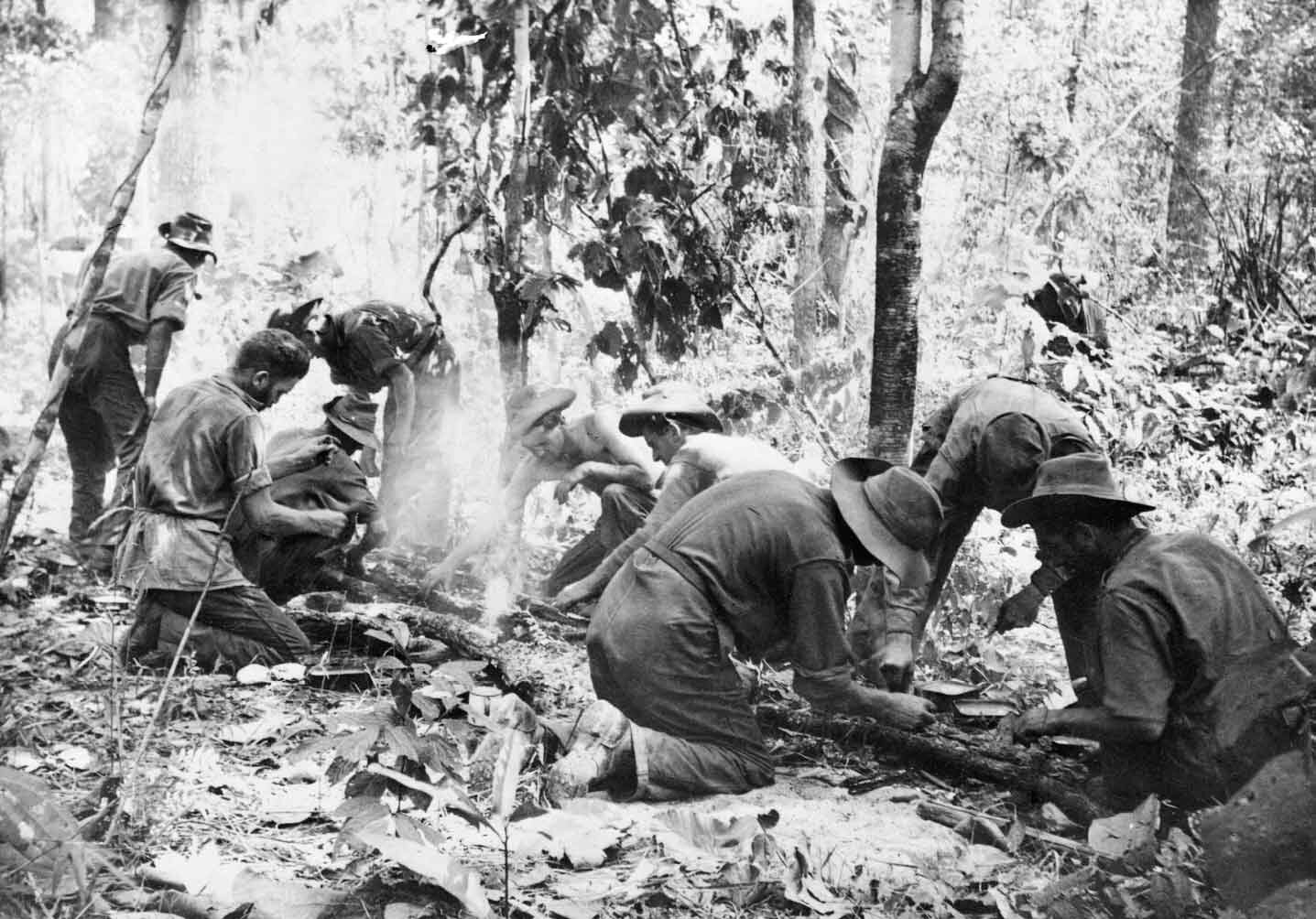
The Chindit Operations of Burma
In 1943 the only allies operating in Burma were The Chindits; all other activities had been stood down. The Chindits gained their name from the chinthe, the mystical lion that guarded the Burmese temples. The Chindits were the brainchild of the unorthodox and charismatic General Orde Wingate who personally led the 1943 Operation Longcloth, hundreds of miles behind Japanese lines. It was the only operation into Burma of that year; it perplexed the Japanese who knew neither the purpose of this penetration group, or how it was sustained in the field.
"Piers Storie-Pugh's talks always bring to life not just the effort and sacrifice on the battlefields, but also the personal stories which played out during and after the Burma Campaign"
Vicky Bowman, United Kingdom Ambassador to Myanmar 2002-2006.
Having crossed the Irrawaddy, Wingate was ordered back to Imphal. His exploits fired the imagination of the Prime Minister Winston Churchill and as a result Wingate was ordered to raise five Brigades in support of General Stilwell's American Chinese Army. Stilwell may have "loathed the lazy Limies" but he had a huge respect for Wingate. The Chindits probably did more than anyone else to keep Stilwell's huge American-Chinese Army committed to the front.
“I should like to thank Piers Storie-Pugh for a most informative and memorable talk on an important historical subject - it was great.”
Field Marshal Sir John Chapple GCB, CBE
In Operation Thursday in 1944, The Chindits cut the essential Japanese supply line to their troops facing Stilwell's Army; blew up bridges, had fierce hand to hand medieval battles and slowed the Japanese advance towards Kohima and Imphal; causing them to be beleaguered the wrong side of the monsoon. The Chindits lit a flame of hope and did a huge amount to keep the American Chinese Army committed to the front. Slim's 14th Army drawn from Great Britain and many parts of the Empire, as well as local troops, may have been the Forgotten Army, but their exploits live on and have become the stuff of legend: The Chindits are right up there in this catalogue of astonishing achievements. Even in the most atrocious conditions against a cruel enemy thousands of miles from home, The Chindit Operations will live on in history as endeavours of extraordinary courage, cheek, panache and considerable sacrifice.
Michael Calvert first served in China before the war; and in 1940 he proved his explosives skills during the Norway disaster. In 1942 he was posted to Burma to command The Bush Warfare School at Maymyo and whilst there he met Orde Wingate. During the withdrawal he had to dress as a women to pass through the villages.
Once in India he was selected by Wingate to command a column on Operation Longcloth, the first Long Range Penetration Expedition back into Burma in 1943. He successfully blew bridges and railway lines, crossed the Irrawaddy before being ordered along with the other columns to return to India. For this action he was awarded his first DSO.
Wingate was authorized to raise a Chindit Division for 1944 and tracked down Calvert in the Maidens Hotel in Calcutta. 'Michael you have been appointed Deputy Commander 77th Brigade and you will probably command it. Get fit and get fat for there will be lean times ahead'.
Calvert now in command of 77th Brigade, landed at Broadway on his 31st birthday, threw the Japanese off Pagoda Hill and fortified it for his use; harassed the Japanese and then went on to capture Mogaung after a grueling three week battle. For his outstanding leadership he was awarded a bar to his DSO. On three separate occasions Calvert was recommended for the Victoria Cross but by then Wingate was dead and Calvert's Brigade was under command of the American General 'Vinegar Joe' Stilwell.
Stilwell knew very little of the Chindit achievements and he was surprised how much Calvert and his Brigade has achieved. As a result he was awarded the American Silver Star. In 1945 back in Europe he was given command of a Special Forces Brigade for the crossing of the Rhine. Calvert was also recognised for his bravery by France, Norway and Belgium.
Piers Storie-Pugh took Mike Calvert back to Burma in 1997 and subsequently Piers made his first DVD film ''Chindit Commander''. Brigadier Michael Calvert was a resident at The Charterhouse in The City of London and then was a patient at Star & Garter where the died. He is buried at Brookwood.
Piers has travelled extensively to many parts of Burma, including the Arakan in the West, Myitkyina in the North, the River Sittang in the South and the Shan Hills in the East. He organised and guided the first British groups to visit Kohima and Imphal and to the Chindit areas of operations. This was all part of his responsibility for setting up and running Remembrance Travel for the MOD / Royal British Legion 1985 to 2010.
Read an article here by Piers about operations near the Gokteik Bridge, in the Shan States.
“The first thing the General said to him was: ''Calvert, did you blow the Gokteik Viaduct Bridge?'' When Calvert replied that he had asked half a dozen times for permission to blow it, but each time was told to leave it alone, the General looked a bit put out. He explained that the order could not be given for political reasons, but that Calvert had been sent there as the person most likely to disobey an order!”
“I believe that without integrity a man had much better not approach a problem at all.”
— Orde Wingate, Founder of The Chindits



